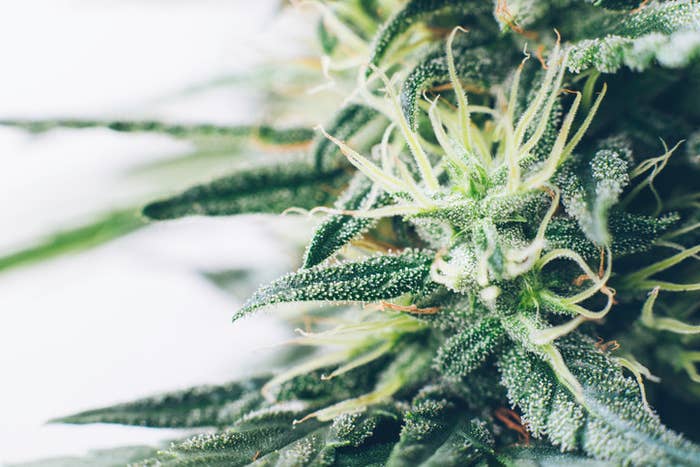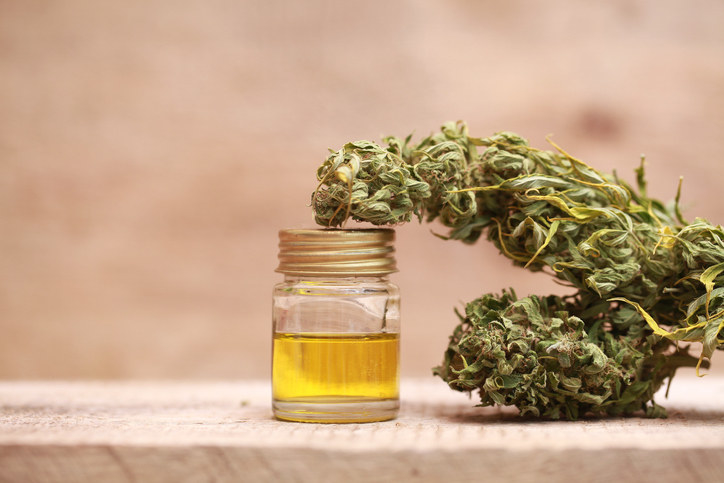Kenny*, a 50-year-old father from Queensland, has been treating his severe epilepsy for 15 years by smoking cannabis.
Kenny began to experience grand mal seizures at 26, and started smoking cannabis at 32 after failing to find a conventional anti-convulsant medication that would work for him.
"In 2003 I was taking 13 anti-epileptic tablets a day and the doctors said they couldn't slow them [the seizures] down — the only way they could stop me fitting at the time was to put me in a medical coma. I've spent over six months of my life in a medical coma", he told BuzzFeed News.
Kenny has been self-medicating with cannabis by smoking four to seven grams a day. The only seizure that Kenny has experienced since he was 32 was due to travelling, when he didn't have access to cannabis.
He believes that cannabis should be a mainstream treatment for epilepsy and says he has had a "100% success rate" with it.
Kenny's story is one of many that suggests cannabis might be the answer to treating severe and drug-resistant forms of epilepsy.
So, what do we really know about treating epilepsy with cannabis?
A new study published this week in the Medical Journal of Australia (MJA) has shown that medicinal cannabis can drastically improve quality of life and reduce symptoms for only a small proportion of children with severe forms of epilepsy.
The MJA trial treated 40 children with drug-resistant epilepsy who are enrolled in the NSW Compassionate Access Scheme with Epidiolex – a medication made from cannabidiol (CBD).
CBD is the second most abundant cannabinoid (chemical compound) in the cannabis plant and when it is extracted and separated from the THC cannabinoid, it is not psychoactive.

The Compassionate Access Scheme provides children with CBD medication for severe epilepsy under the Authorised Prescriber Scheme of the Therapeutic Goods Administration if they have "explored all conventional treatment options".
The participants in the NSW study were aged from one to 16 and suffered from types of epilepsy characterised by frequent, severe, and often long seizures that could not be controlled by drugs.
These forms of epilepsy included Dravet syndrome, Doose syndrome and Lennox-Gastaut syndrome, amongst others.
Most of the participants suffered from intellectual disability as a result of their condition.
On average, each child had trialled nine different types of anti-epileptic drugs before participating in the study. They received the CBD in addition to their anti-epileptic medication for up to 12 weeks.
The study recorded the subjective reports given by caregivers about the children's seizures and quality of life.
Only 12 caregivers of children in the trial reported that the overall health of their child had improved, to varying degrees.
Doctor John Lawson, lead author of the paper and a specialist in child neurology at Sydney Children's Hospital, told BuzzFeed News that for those 12 children, who could have up to 100 seizures a day, the CBD reduced seizures as well as improving social functioning.
"They were more alert and just more alive, I suppose," he said. "Those effects are really hard to measure...but many families think the children were communicating better and were more social."
For the children who didn't seem to benefit from CBD treatment, there were only minor side effects from the drug including abnormal drowsiness in 15 children and and nausea or vomiting in seven.
The paper concluded that drug-resistant epilepsy is still "an area of significant unmet clinical need, and patients and families are desperate for new treatment options."

The scientific literature investigating the efficacy of cannabis for epilepsy treatment is complicated.
Cannabis has long been used in human medicine for treating convulsions and seizures associated with epilepsy.
The use of cannabis as an anti-convulsant medicine can be traced back to around 1000 B.C in India, where it was used to treat seizures from epilepsy, tetanus and rabies.
Specific mentions of treating epilepsy with cannabis have also been found in 11th Century writings from the Iranian physician, al-Mayusi.
In the early 19th Century William O'Shaughnessy, an Irish physician famous for innovations in pharmacology and chemistry, described case studies in India where cannabis reduced severe seizures in babies.
Despite this history of cannabis being used for epilepsy, there is still no fundamental understanding of how cannabis helps prevent seizures in the brain.
Lawson says that there are theories related to the energy balance of the cells in the brain "but it's all a little bit mystical and it's hard to be sure...nobody truly understands how it works".
Modern studies of cannabis for epilepsy treatment were hampered by the multi-nation prohibition of the plant in the 1930s, but interest in the drug for medicinal use was reignited in the '70s and '80s.
One study in 1977 found that treatment with an oral CBD resulted in two epileptic patients becoming seizure-free, but other studies from the same period failed to show statistically-significant results.
The focus on cannabis for epilepsy treatment has become a key conversation in medical literature in recent years, particularly for childhood epilepsies.
The number of articles published on the topic skyrocketed from five in 2008-9 to 52 in 2016-17.
Lawson believes that the new wave of interest in cannabis has been mostly driven by online stories of miraculous recoveries in epileptic children such as Charlotte Figis after treatment with CBD or cannabis oil.
Lawson remains apprehensive about the true efficacy of cannabis compounds despite this anecdotal evidence.
"I think there's definitely some truth in that medical cannabis does help some people," Lawson said. "I suppose the problem is that those individual stories — we don't really learn from them much.
"And it's sort of how science works. Trials get criticised because they take time and people say, 'Oh look, here's the evidence that it works', but it's not really evidence, it's a story. We get a possibility that it's going to work for the next child but we don't know".
Professor Iain McGregor, director of the Lambert Initiative for Cannabinoid Therapeutics, believes failure to show the same success in clinical settings that people such as Kenny have experienced is due to the compounds being used.
McGregor believes that because CBD has not shown the success that are being reported by epileptic users in the real world, the control of seizures can probably be attributed to another compound (or combination of the 400 compounds) in the cannabis plant.
"CBD alone...everything points to it being a sort of incremental improvement rather than a quantal improvement", said McGregor.
According to a study from the Lambert Initiative published in March last year, 14% of Australian adults and children with epilepsy had used, or are currently using, cannabis products as treatment.
90% of the adults and 71% of the children surveyed with epilepsy reported success in controlling their number of seizures after commencing cannabis use.
However, Lawson cautions that cannabis should only be used for severe forms of epilepsy in children.
"I think people have a belief that because it's natural it's safe for a child, but there are lots of things that are natural that are not safe like the opium poppy and alcohol and cocaine. If it's strong enough to stop seizures, it's got to be having other effects as well, it's not all good news," he said.
For adults like Kenny, the option of treating epilepsy with cannabis is not as risky as it is for children and he believes that it should be prescribed quickly when epilepsy sufferers are first diagnosed.
"I honestly believe it shouldn't be the last line of defence — it should be the first", he said.
* Not his real name.
